This article will delve into the main aspects of building a Successful SaaS Startup, from planning to deployment strategies. In conclusion, you will have a comprehensive understanding of how to effectively utilize talent and technology to develop innovative SaaS application development solutions for your company.
What is SaaS
SaaS is the cloud computing model in which a consumer can obtain cloud-based software from a vendor. It’s a very exciting deviation from the traditional way of getting applications into a business environment. There is no need for server building, application installation, or setting up; instead, the apps live on a remote cloud network that the user can access via the web or an API. The company offers software, typically sold on a subscription basis in which the customer gains access to such software for definite periods and pays some amount.
Development Process to Build a SaaS Product
These steps will be important for developing a good product in the cloud nature of SaaS service:
Planning
The SaaS application development framework process starts with careful planning. The success of SaaS applications includes searching for the technology, appropriate market research, studying the target audience, defining the application’s purpose, and main features.
Planning is usually the job of a stakeholder, but your SaaS application development platform partner can help. An experienced software house will enable business analysis services to research your case and provide the best solutions to enter and grow in the desired market.
It is a way of managing technical debt properly. Technical debt can cause SaaS application development services company costs to increase and financial returns to dwindle. Given the stakes, this is something that software developers and high-end decision-makers alike should understand and handle appropriately.
Discovery
The discovery stage consists of structuring the development plan for your successful SaaS start-up product and preparing documentation that will enable your engineering team to build the application. Specifically, the BA (business analyst), at this discovery stage of a project, is responsible for holding meetings to learn details about the project and taking care of the following:
Software Requirements Specification (SRS): a document containing features, means of implementations to those features, project goals, users’ needs, and scope of work about an application on the cloud.
Risk assessment and mitigation plan: It is an assessment of the risks that you are likely to come across when developing your app and a strategy on how to reduce these risks.
Feature breakdown list: all the features you want to implement on your successful SaaS start-up platform and time estimates.
Cost estimate: The projected budget you may spend on the development of the SaaS service. A BA (business analyst) also helps you to define the optimal development team structure to build your Software as a Service platform within
Design the SaaS model
Web App Design concerns UI/UX. It is critical that you pre-determine the kind of interface that will meet your audience’s needs before developing any form of SaaS application.
Note that successful SaaS start-up works on a computer and phone. A UI/UX specialist will design for various device resolutions so your users can work comfortably everywhere.
Architecture design and cloud computing
SaaS databases, storage, and services are cloud-based. The successful SaaS start-up model manages the cloud environment on which the SaaS service is employed, using AWS, Snowflake, Azure, or IBM Cloud.
A software architect should work to develop a high-level architecture design illustrating the components of your app and their relationships, which will guide further development. It should also ensure that the software-as-a-service application runtime is high-performing, secure, and can quickly scale with the right technology stack.
Development And Testing
1. Develop SaaS Application Tech Specs
Accumulate as much information as possible about potential customers, competition, trends, and new technologies. With this user data and knowledge of the competitors’ apps, you can create an exclusive solution.
At the end of the first stage in app development, you will create a very detailed document with your functional and non-functional needs for the app, as well as guidelines for development. This may be the start of your MVP.
2. Define sources of revenue
How will your app make money? This is an important question and an essential step because it will determine the structure of your software.
Revenue streams, with the most common being advertising, subscriptions, and freemium models. It is legitimate to charge transaction or selling fees on your marketplace.
3. Select a cloud infrastructure provider
Choose a good cloud infrastructure company that can support plenty of users and their data. You should select the cloud vendor with good scalability, stability, and performance that helps enable third-party integrations for your successful SaaS start-up platform.
4. Create an MVP
An MVP (Minimum Viable Product) is a prototype application with only basic functionalities. Planning the features of your MVP might take time, so focus on implementing high-impact, low-cost components.
5. Implement and Test the Changes
Get early feedback on a minimum viable product. Pose questions about the advantages and disadvantages of your product directly to the users. At this point, changing app features or architecture is much easier. Your proof-of-concept testers can become early app adopters.
6. Start the End Product Development
An app development team in the chosen language, toolsets, and associated frameworks will start coding. Agile will certainly bring speed to your development process and keep it on course with specifications and quality in mind. Best practices recommend QA testing at every stage of the build. Communicate openly with your dev team every step of the way during SaaS implementation. You want to ensure you keep your project on target with product requirements.
7. Release and maintenance
After QA testing, you can go live with your successful SaaS start-up platform web-based. Because user acceptance testing is carried out after the release of your business application, it is the final process in QA.
8. Promote
Promotion should happen in parallel to creating your SaaS software. Customers should be generated before the release of the first product in the web stores.
After the final deployment, your successful SaaS start-up developers should provide ongoing application updates and maintenance. Your users must also have ease of access to technical support. If the SaaS solution that needs to be developed requires high-tech knowledge, you would instead form an app development team that is web-savvy and cloud-savvy to get the job done right in making cloud services and platforms. You could opt for a deal with a software development company, which provides you with available talent based on several agreed-upon hours. You can either outsource the entire project or add experienced SaaS developers to your team to fill the gap. In this way, a SaaS development company comes to your assistance: it develops a solution according to your business goals.
Benefits of Building a SaaS Application
Building a SaaS Application in the Cloud: Advantages. There are many, for most companies, that will look to leverage the cloud benefits for their software needs and, more so, for SaaS companies looking to address specific use cases. Here are the key advantages of building a SaaS application addressing your business suite requirements:
1. Rapid Deployment
Building a successful SaaS start-up application allows for rapid deployment and updates, as changes can be implemented centrally and pushed out to all users simultaneously. This agility enables businesses to respond quickly to market demands and stay ahead of competitors by delivering new features and updates on time.
2. Improved Customer Experience
The SaaS applications can be easily customised, providing a high level of individualization for concrete customers or user groups. This will help give specific solutions to the customer or user’s needs, which would have a more personalised touch from the service and, therefore, let it enjoy higher satisfaction and retention rates.
3. Integration Capabilities
Businesses can seamlessly align other software and systems with successful SaaS start-up applications. It helps users to align information from multiple sources onto a single interface, thus enhancing efficiency and productivity within the organization.
4. Analytics and Insights
Most SaaS software comprises analytics and reporting capabilities built into it that provide users with an array of valuable insights into their data and business processes. These analysis tools enable any business to make good decisions, understand trends, and change operations toward better performance and outcomes.
5. Global Reach
For SaaS applications accessed through the Web service providers can quickly extend their global footprints without needing physical infrastructure or local deployments, as Internet connections are available everywhere. The services are availed globally, allowing the providers to serve customers and users anywhere in the world, thus unlocking growth and revenue opportunities across geographical boundaries relatively easily.
6. Flexibility and Customization
SaaS applications developed by a professional SaaS development company incorporate flexibility and customization to address business demands from any type of business. Whether configuration changes, enhancements, or integration with third-party tools, the successful SaaS start-up model allows adjusting the application to the workflow, ensuring better adoption and satisfaction levels among users.
Key Takeaways
Being able to develop an application for successful SaaS start-up makes an opportunity truly strong for process efficiency, improved customer satisfaction, and maintaining competitiveness in business. A long-term investment in the SaaS development of the product will be ensured, with the adaptability of the evolving market demands relative to the levels of scalability, accessibility, and cost-effectiveness driven by growth and innovation.
Our proficiency in creating Successful SaaS Startup is centred around harnessing state-of-the-art cloud infrastructure to construct sturdy platforms. This progressive method seamlessly merges sophisticated analytics, granting enterprises a strong groundwork to efficiently construct and enhance their SaaS applications.
User-centric design and scalable architecture focus bring a flexibility dimension unparalleled in a broad set of markets. This results in innovative solutions, allowing organisations to confidently develop, refine, and launch their SaaS platforms.
Kryoverse is the most experienced resource for developing state-of-the-art SaaS apps through its highly qualified software developers. Our team, using advanced technologies, creates SaaS applications customized according to the specific requirements of business types from a sector.
Kryoverse will be your best reliable partner to build a SaaS application, capitalising on our expertise and proven track record in delivering innovative, scalable, and efficient software solutions customised to the SaaS business model.



